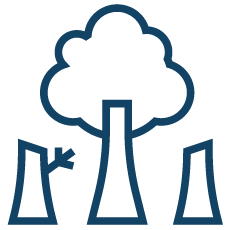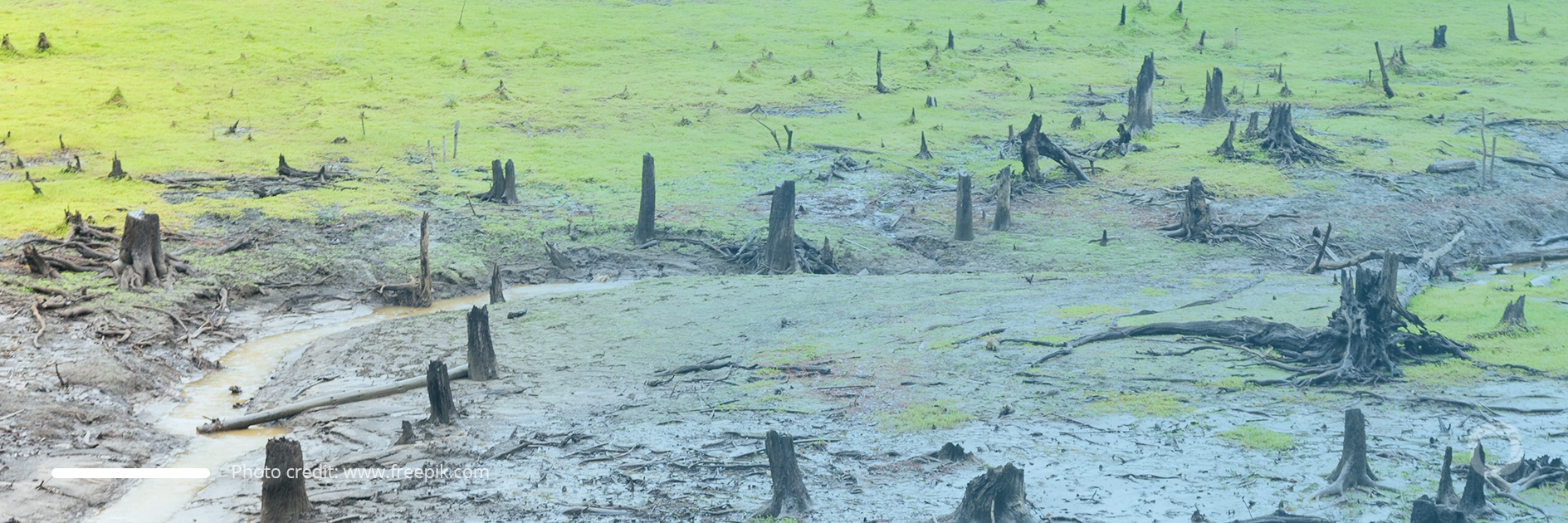Deforestation is a serious problem that persists in all regions of the world. It refers to the permanent clearing of forested land caused by human activity. Over the last three decades, our planet has lost more than 1.3 million square kilometers of forested land with the rates of deforestation continuing to remain high. This article discusses deforestation and provides a list of the causes, impacts, and solutions related to it.
 What is Deforestation?
What is Deforestation?
Deforestation refers to the permanent removal of forested land through deliberate, natural, or accidental means. In the majority of the cases, deforestation occurs as a result of human activity that is seeking to increase agricultural cropland area or to undertake infrastructure development or mining projects. Currently, around 30% of the world’s land area (almost 40 million square km) is covered by forests but this is, however, disappearing at an alarming rate. In just the last three decades, our planet has lost more than 1.3 million square kilometers of forested land, an area larger than South Africa. Moreover, the Amazonian rainforests, which are seen as the “lungs” of our planet, have diminished by 17% during the last 50 years. Overall, deforestation causes irreversible damage to our environment leading to the extinction of thousands of species of life and to the release of billions of tons of CO2 into the atmosphere.
 What causes Deforestation?
What causes Deforestation?
There are a variety of factors that lead to deforestation, here are some of the most important that relate to human activity:
- Agriculture – is considered the main factor and is responsible for 80% of deforestation. About 33% of forested land is lost as a consequence of subsistence agriculture and 40% results from commercial or industrial agriculture such as palm oil plantations
- Cattle farming – is the leading factor of deforestation in the Amazon rainforest and is responsible for the release of more than 340 million tons of carbon into the atmosphere every year, equivalent to 3.4% of current global emissions
- Infrastructure development – specifically, road infrastructure, is linked to deforestation. The Yale School of the Environment reports that a number of infrastructure projects planned to take place in some Amazon river basin countries over the next five years could result in the deforestation of over 24,000 square km.
- Urbanization – caused the eradication of 35 million hectares of forest between 1992 and 2015. As 68% of the world population is expected to live in urban areas by 2050, more cities will be pushed to challenge the natural boundaries surrounding them which may lead to deforestation
- Human-lit fires – specifically target the Amazon rainforest where farmers deliberately start fires to clear land for crops or livestock.
 The Impacts of Deforestation
The Impacts of Deforestation
- Increase of carbon dioxide emissions – healthy forests can capture and store carbon dioxide. Once cut, trees release CO2 back into the atmosphere leading to the greenhouse effect
- Loss of biodiversity – tropical forests host more than 13 million distinct species of the world’s plants and animals. Deforestation can cause the loss of habitat and ultimately extinction for most of them
- Soil erosion – trees help the land to retain water and the topsoil that provide nutrients for all forms of life living in the area. Deforestation accelerates nutrient loss and erosion
- Water pollution – forests act as water purification plants and play a crucial role in natural water cycles. Deforestation can lead to a decrease in water quality and even cause droughts.
 Solutions to Deforestation
Solutions to Deforestation
- Law and regulations – national governments and international organizations need to increase their efforts to curb illegal acts of deforestation and enforce forest preservation policies
- Replanting (Reforestation) – long-term tree (re)planting strategies can aid in restoring forests that have been reduced by fire or illegal felling
- Promoting eco-forestry –highlights the need to cut down trees in an environmentally friendly manner in amounts that strictly cover the necessary needs
- Change in individual behavior – every individual can contribute to the decline in illegal felling by making informed daily choices and rationalizing consuming behavior.
Take a look at this article to find out more about the deforestation of rainforest in Brazilian Amazon.
DevelopmentAid is the leading provider of business intelligence and recruitment tools designed to assist those active in the development sector. Join today and gain access to exclusive information on the upcoming funding opportunities (tenders and grants) from the largest bilateral and multilateral donors.

